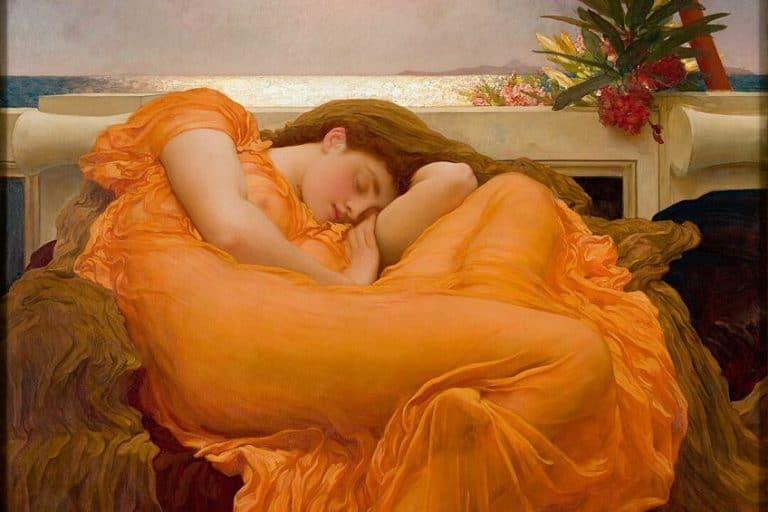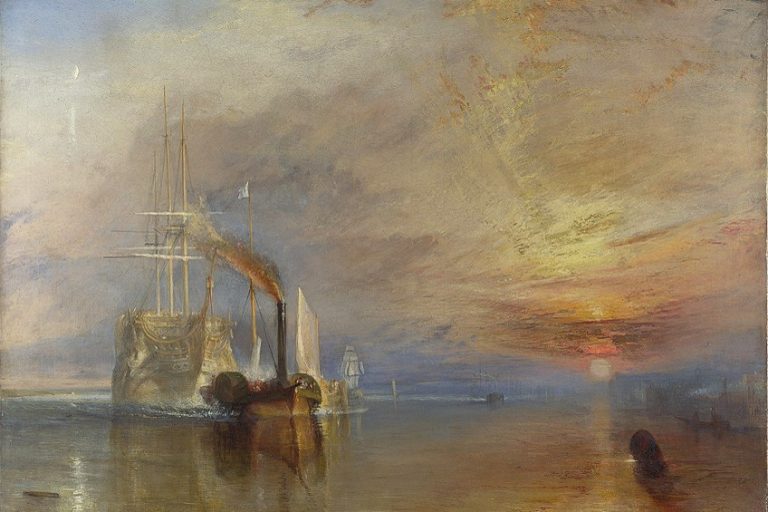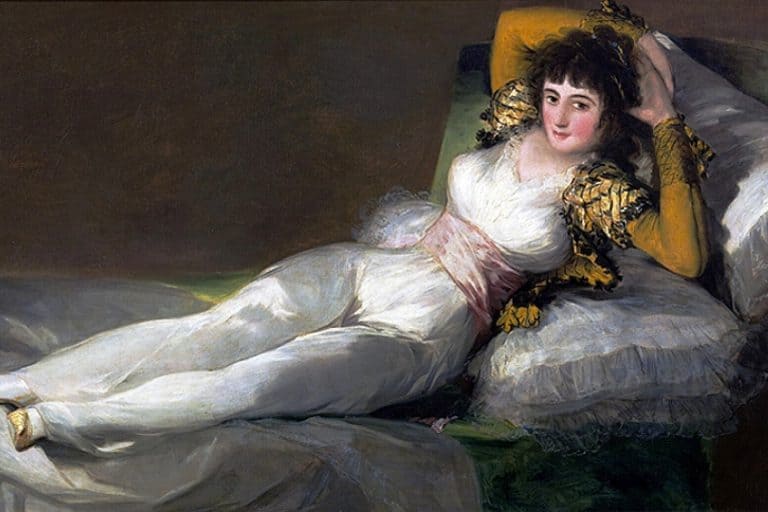Caravaggio Paintings – Discover the Master of Light and Shadow
Caravaggio, one of the most influential figures in Baroque art, left behind a legacy of remarkable paintings that continue to captivate audiences centuries after his time. His revolutionary use of chiaroscuro and dramatic storytelling transformed the art world, earning him a reputation as a master of light and shadow. In this article, we delve into the top 10 most famous paintings by Caravaggio, exploring the themes, techniques, and impact of these timeless works of art.
Table of Contents
- 1 The Legacy Left by Caravaggio
- 2 Top 10 Caravaggio Paintings to Know
- 2.1 Boy with a Basket of Fruit (c. 1593 – 1594)
- 2.2 The Cardsharps (1594)
- 2.3 Bacchus (1596)
- 2.4 Medusa (1597)
- 2.5 Narcissus (1597 – 1599)
- 2.6 Judith Beheading Holofernes (c. 1598 – 1602)
- 2.7 The Calling of Saint Matthew (1599 – 1600)
- 2.8 The Conversion of Saint Paul (1601)
- 2.9 Supper at Emmaus (1601)
- 2.10 David with the Head of Goliath (c. 1609 – 1610)
- 3 Frequently Asked Questions
The Legacy Left by Caravaggio
Caravaggio’s legacy is profound and far-reaching, leaving an indelible mark on the art world that continues to influence artists and art enthusiasts alike. One of his most significant contributions was his innovative use of chiaroscuro, a technique that dramatically contrasts light and shadow to create depth and intensity in his paintings. This revolutionary approach not only brought a heightened sense of realism to his works but also paved the way for the Baroque style to flourish.

Moreover, Caravaggio’s bold and often controversial subject matter, infused with raw emotion and human vulnerability, challenged societal norms and pushed the boundaries of artistic expression. His daring portrayal of biblical scenes and everyday life moments captured the attention of patrons and critics alike.
This cemented his reputation as a provocative and visionary artist whose impact continues to resonate through the centuries.
Top 10 Caravaggio Paintings to Know
In this section, we delve into the world of art and explore the top 10 artworks that have left an indelible mark on history, influencing generations of artists and captivating audiences with their beauty, depth, and meaning. From iconic masterpieces by renowned artists to groundbreaking works that have redefined artistic conventions, each artwork in this list represents a pinnacle of creative achievement and cultural significance. Join us on a journey through these timeless treasures as we uncover the stories, themes, and artistic techniques that make them enduring symbols of human creativity and expression.

Boy with a Basket of Fruit (c. 1593 – 1594)
| Date | c. 1593 – 1594 |
| Medium | Oil on canvas |
| Dimensions (cm) | 70 × 67 |
| Where Is It Housed? | Galleria Borghese, Rome, Italy |
This painting depicts a young boy holding a basket of various fruits, including grapes and peaches. The boy’s expression is serene as he gazes directly at the viewer. Caravaggio’s meticulous attention to detail in capturing the textures and colors of the fruits highlights his skill in naturalistic representation.
The painting’s significance lies in its portrayal of earthly delights and the fleeting nature of beauty, symbolized by the ripe fruits that will soon perish, reflecting themes of transience and mortality.

The Cardsharps (1594)
| Date | 1594 |
| Medium | Oil on canvas |
| Dimensions (cm) | 94.5 × 130 |
| Where Is It Housed? | Kimbell Art Museum, Fort Worth, Texas, United States |
In this painting, Caravaggio portrays a scene of deception and cunning as a young man is cheated in a game of cards by two older players. The intense focus and gestures of the figures convey the tension and drama of the moment. Caravaggio’s innovative composition and use of chiaroscuro create a dynamic visual narrative, emphasizing the contrast between light and shadow to heighten the emotional impact.
The painting is important for its thematic exploration of deceit and human nature, reflecting Caravaggio’s interest in psychological realism.

Bacchus (1596)
| Date | 1596 |
| Medium | Oil on canvas |
| Dimensions (cm) | 95 × 85 |
| Where Is It Housed? | Uffizi Gallery, Florence, Italy |
Caravaggio’s Bacchus portrays the Roman god of wine and revelry, depicted here as a youthful figure with a crown of grape leaves and clusters of grapes in his hand. The painting’s composition, with Bacchus offering a goblet of wine to the viewer, invites engagement and participation in the celebration of earthly pleasures. Caravaggio’s use of light and shadow accentuates the figure’s sensuality and vitality, capturing the essence of Bacchus’s mythological persona.
The painting’s significance lies in its exploration of hedonism, ecstasy, and the sensory experience associated with Bacchic rites.
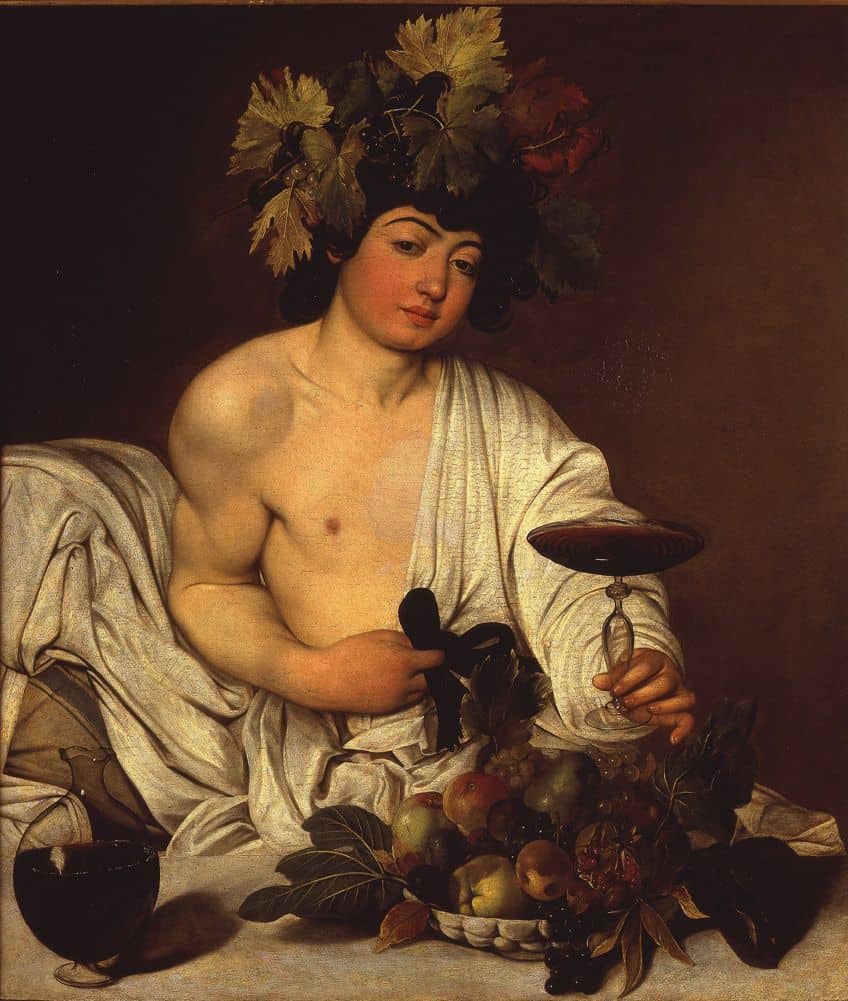
Medusa (1597)
| Date | 1597 |
| Medium | Oil on canvas |
| Dimensions (cm) | 60 × 55 |
| Where Is It Housed? | Uffizi Gallery, Florence, Italy |
Medusa depicts the mythological figure of Medusa, whose gaze turned onlookers into stone. The painting captures the moment of Medusa’s transformation, with her wild, writhing snakes for hair and a look of horror on her face. Caravaggio’s mastery of chiaroscuro adds a sense of drama and intensity to the scene, emphasizing Medusa’s menacing presence.
The painting’s importance lies in its depiction of mythological subject matter and the exploration of fear, power, and the monstrous in classical mythology.

Narcissus (1597 – 1599)
| Date | 1597 – 1599 |
| Medium | Oil on canvas |
| Dimensions (cm) | 110 × 92 |
| Where Is It Housed? | Galleria Nazionale d’Arte Antica, Rome, Italy |
This painting portrays the mythological figure Narcissus gazing at his own reflection in a pool of water. The composition is focused on Narcissus’s absorption with his own image, with delicate details in depicting the flowers and foliage surrounding him. Caravaggio’s use of light draws attention to Narcissus’s contemplative expression, capturing the moment of self-absorption and introspection.
The painting’s significance lies in its exploration of vanity, self-love, and the mythological theme of the dangers of excessive self-admiration.

Judith Beheading Holofernes (c. 1598 – 1602)
| Date | c. 1598 – 1602 |
| Medium | Oil on canvas |
| Dimensions (cm) | 145 × 195 |
| Where Is It Housed? | Galleria Nazionale d’Arte Antica, Rome, Italy |
Judith Beheading Holofernes depicts the biblical story of Judith, a widow, who saves her people by seducing and then beheading the Assyrian general Holofernes. The painting captures the gruesome moment of the beheading with intense realism, showcasing Judith’s determination and strength. Caravaggio’s use of light and shadow adds to the dramatic impact of the scene, emphasizing the brutality of the act.
The painting is significant for its bold portrayal of a female protagonist taking decisive action, embodying themes of courage, heroism, and the triumph of good over evil.

The Calling of Saint Matthew (1599 – 1600)
| Date | 1599 – 1600 |
| Medium | Oil on canvas |
| Dimensions (cm) | 322 × 340 |
| Where Is It Housed? | Contarelli Chapel, San Luigi dei Francesi, Rome, Italy |
In The Calling of Saint Matthew, Caravaggio depicts the moment when Jesus calls Matthew, a tax collector, to follow him. The painting captures the contrast between the divine light emanating from Jesus and the dark, shadowy figures of Matthew and his companions. Caravaggio’s use of light symbolizes the spiritual awakening and transformation of Matthew, highlighting themes of divine grace, redemption, and the power of faith.
The painting is significant for its innovative composition and religious narrative, marking a shift towards a more naturalistic and emotionally charged style in religious art.
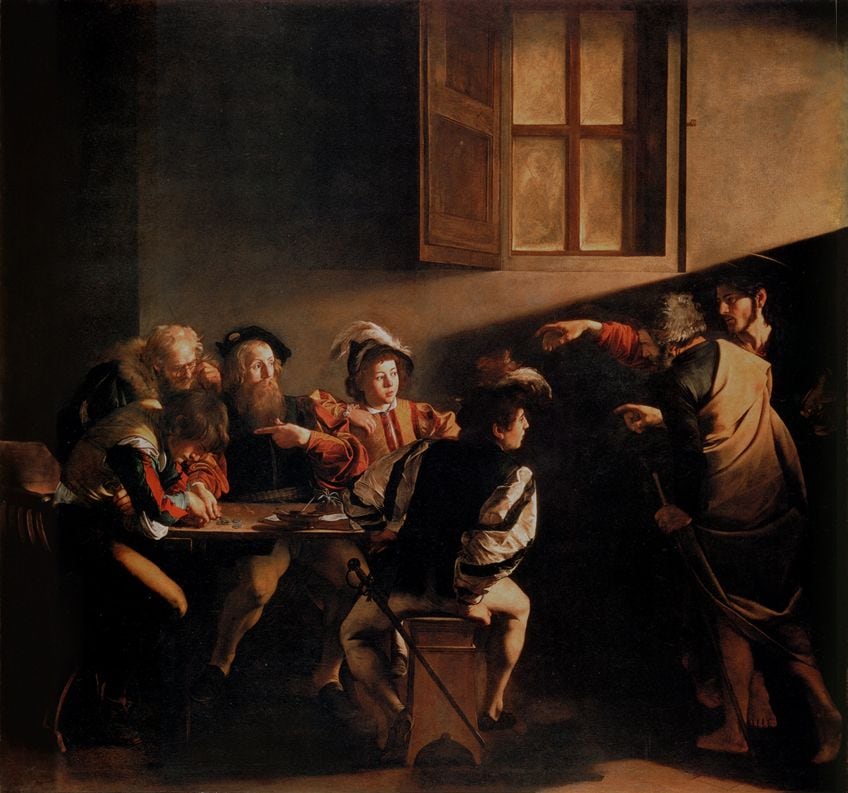
The Conversion of Saint Paul (1601)
| Date | 1601 |
| Medium | Oil on canvas |
| Dimensions (cm) | 230 × 175 |
| Where Is It Housed? | Odescalchi Balbi Collection, Rome, Italy |
Caravaggio’s The Conversion of Saint Paul portrays the dramatic moment of Saint Paul’s conversion on the road to Damascus, as described in the Bible. The painting captures Paul’s fall from his horse, surrounded by a burst of light symbolizing the divine intervention that led to his conversion. Caravaggio’s use of chiaroscuro creates a sense of movement and dynamism in the scene, emphasizing the spiritual transformation taking place.
The painting is important for its portrayal of a pivotal event in Christian history, embodying themes of divine revelation, repentance, and the transformative power of faith.

Supper at Emmaus (1601)
| Date | 1601 |
| Medium | Oil on canvas |
| Dimensions (cm) | 141 × 196 |
| Where Is It Housed? | National Gallery, London, United Kingdom |
Supper at Emmaus depicts the moment when Jesus reveals himself to two disciples in Emmaus during a meal, following his resurrection. The painting captures the disciples’ shock and recognition as they realize the identity of their guest. Caravaggio’s use of light draws attention to Jesus’s gesture of blessing, symbolizing the spiritual significance of the moment.
The painting is significant for its portrayal of a key event in Christian theology, emphasizing themes of revelation, communion, and the presence of the divine in everyday life.

David with the Head of Goliath (c. 1609 – 1610)
| Date | c. 1609 – 1610 |
| Medium | Oil on canvas |
| Dimensions (cm) | 125 × 101 |
| Where Is It Housed? | Galleria Borghese, Rome, Italy |
Caravaggio’s top 10 most famous paintings offer a glimpse into the genius of an artist who defied conventions and pioneered a new era in art history. Through his mastery of light, shadow, and storytelling, Caravaggio created timeless works that continue to inspire and resonate with audiences worldwide. From religious narratives to intimate portraits, each painting showcases Caravaggio’s unparalleled talent and enduring legacy in the art world. As we reflect on these masterpieces, we are reminded of Caravaggio’s lasting impact and contribution to the rich tapestry of artistic expression.
Frequently Asked Questions
Why Is Caravaggio Considered an Important Artist in Art History?
Caravaggio is considered important in art history for his revolutionary use of chiaroscuro, which dramatically enhanced the realism and emotional depth of his paintings. His innovative techniques and dramatic storytelling had a profound influence on Baroque art and subsequent artistic movements.
How Did Caravaggio’s Life Experiences Influence His Art?
Caravaggio’s tumultuous life, marked by personal conflicts and legal troubles, is reflected in the raw intensity and realism of his art. His experiences may have contributed to his choice of gritty subject matter and his ability to convey human emotion with striking authenticity.
Why Are Caravaggio’s Paintings Still Admired and Studied Today?
Caravaggio’s paintings continue to be admired and studied today for their innovative techniques, emotional intensity, and timeless relevance. His ability to capture human drama and vulnerability transcends centuries, making his works resonate with contemporary audiences and artists.
Isabella studied at the University of Cape Town in South Africa and graduated with a Bachelor of Arts majoring in English Literature & Language and Psychology. Throughout her undergraduate years, she took Art History as an additional subject and absolutely loved it. Building on from her art history knowledge that began in high school, art has always been a particular area of fascination for her. From learning about artworks previously unknown to her, or sharpening her existing understanding of specific works, the ability to continue learning within this interesting sphere excites her greatly.
Her focal points of interest in art history encompass profiling specific artists and art movements, as it is these areas where she is able to really dig deep into the rich narrative of the art world. Additionally, she particularly enjoys exploring the different artistic styles of the 20th century, as well as the important impact that female artists have had on the development of art history.
Learn more about Isabella Meyer and the Art in Context Team.
Cite this Article
Isabella, Meyer, “Caravaggio Paintings – Discover the Master of Light and Shadow.” Art in Context. March 25, 2024. URL: https://artincontext.org/caravaggio-paintings/
Meyer, I. (2024, 25 March). Caravaggio Paintings – Discover the Master of Light and Shadow. Art in Context. https://artincontext.org/caravaggio-paintings/
Meyer, Isabella. “Caravaggio Paintings – Discover the Master of Light and Shadow.” Art in Context, March 25, 2024. https://artincontext.org/caravaggio-paintings/.





